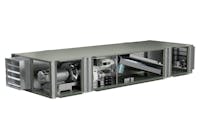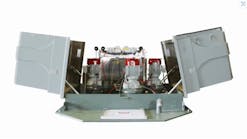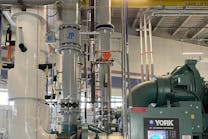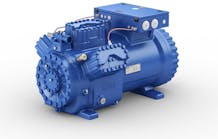Commercial-Building Energy Efficiency; Denying Climate-Change Deniers
According to the U.S. Energy Information Administration, total energy consumption in commercial buildings increased just 7 percent from 2003 to 2012, while the inventory of those buildings increased 14 percent. There is no doubt the ever-increasing energy efficiency of HVAC equipment contributed to that achievement. The reduction in energy consumption would have been even greater had plug loads—primarily from increased computer/information-technology consumption—not increased from 38 percent of total commercial-building electric-energy consumption in 1979 to approximately 61 percent in 2012.
A key driver of improved commercial-building energy efficiency has been, of course, cost savings. However, increased awareness of the clear correlation between energy conservation and climate change on the part of building owners and managers also is contributing. Evidence of that increased awareness includes significant efforts by industry organizations, such as Building Owners and Managers Association (BOMA) International, to encourage their members to implement green and sustainable building operations and practices. An excellent example of that effort is the BOMA Energy Efficiency Program (BEEP), a six-course series providing information, strategies, technologies, how-to guides, and resources for building operators. The program is well recognized within the commercial real-estate industry and is approved by the U.S. Green Building Council/Green Business Certification Inc. for continuing-education hours for LEED accredited professionals.
As an energy auditor for energy-savings performance contracts and Property Assessed Clean Energy (PACE)-financed projects, our firm is involved with many large-scale commercial energy-efficiency retrofits, including major lighting-replacement projects, chiller-plant upgrades, and solar photovoltaic installations. However, energy-efficiency improvements in commercial buildings (and in our homes) can be much more modest. Buying Energy Star-labeled products, shutting off lights and computers that are not in use, unplugging devices that have parasitic loads even when they’re not operating, and replacing older, inefficient lighting with LEDs are relatively straightforward and cost-effective (which is why we refer to those types of measures as low-hanging fruit). If we all did them, it would contribute significantly to our efforts to mitigate climate change.
Speaking of climate change, when I have written about it (and the associated sea-level rise), I have received comments from climate-change deniers, many of whom, surprisingly, are graduate engineers. It has—until recently—been difficult for me to understand how technically educated, logical reasoners could deny overwhelming scientific evidence. Now comes the book “Denying to the Grave: Why We Ignore the Facts That Will Save Us,” in which Sara E. Gorman and Jack M. Gorman discuss the ease with which we dismiss people who believe things—such as climate change not being real—that are factually incorrect. The Gormans point out that, in many cases, it is not ignorance on the deniers’ part, but, rather, psychology. Of course, in the case of climate change, it also may be politics. The authors stress that we humans are very uncomfortable with phenomena without clear causes, and we don’t assess risk in a rational manner. They also note that we respond more to stories than to statistics. The point of the book, which I am taking to heart, is that changing peoples’ minds requires compassion and understanding, not disdain.









